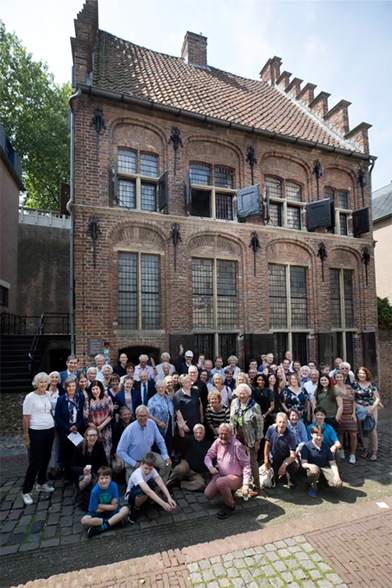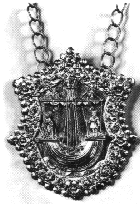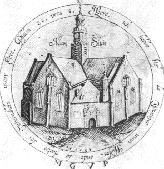The Family and our rivers – Kolffs: people from the rivers

In her fine publication on the history of our family (Kolff in Zeven Eeuwen) Mrs. Manneke gave some concise characteristics of the three branches of our family. She did not dare to do this for the family as a whole. A sensible decision for how could the hundreds of Kolffs through the centuries be denominated as one?
There is, however, one feature that could apply. This feature is the close connection between our family and the main rivers in our country (the Netherlands [Ed.]). Traces of that close connection can still be found with many of us and are important up to the present day.
It began when Wouter Kolff (VI), son of the Oisterwijk bailiff, sought refuge around 1586 at Geertruidenberg because of the troubles due to the Dutch Revolt. Geertruidenberg: the town where his spouse Anneken Pap came from.
His son Wouter (VII) went to sail, became a skipper and moved along the river to Nijmegen. He married three times, and one can say ‘from along the rivers’: the brides came from Antwerp, Tiel and Nijmegen.
His son, also a Wouter (VIII), was dean of the guild of boatsmen, and got married more prominent, to a young woman from the Van Heteren family. This Van Heteren family was a somewhat chivalrous family from the Rijk van Nijmegen.
From their son, again a Wouter (IX), who became a vicar, we are all descendants. In certain sence he was a guy from the shore, however it is unmistakable, that his first position was at Vuren and Dalem. A small place on the outside of Gorinchem on the banks of the river Waal. His life ended, as all Kolffs know, as a vicar at the fishing town of Maassluis, where little ships were hanging in the church and where almost the entire population was dependent of shipping.
In the history of our country too often navigation of the seas is emphasised. As if anyone who wanted to become someone would first have to make a passage to the seas. In history we have neglected the importance of the sailing activities on the big rivers of our country. We had almost forgotten that the experience with water had to be built up during many centuries on the larger inland rivers.
The wife of Rev. Wouter Kolff, Petronella van Duyren, originally came from Nijmegen, just like her husband. To visit her two elder sons, for instance to be present at the baptism of her grandchildren, she sailed the rivers. The oldest of the two was a minister at Brandwijk in the Alblasserwaard, the other at Nieuw-Beijerland. Even though the family were boatsmen no longer, Maassluis remained for long their basis. Later Rotterdam took the place of Maassluis, while also from Middelharnis the close ties to the rivers and the estuaries stayed of importance.
One must, I think, imagine that business relations and the circle of friends could only be found villages or towns that had a port. Notable is that the name Benjamin, which is very frequent within my sub-branch of the family, has come from the Rouffaer family, another true family of the rivers.
The family Rouffaer derived the name from the Jamin family (from a certain Benjamin Jamin in the 17th century, name to be pronounced in the French/Walloon way!). Someone who does research on the history of these names moves along the rivers Meuse and Rhine, and comes across Arnhem, Venlo, Roermond, Maastricht, and finally Liege. These people found their way well from Dordrecht to Liege and from Kleef to Maassluis. Of the villages behind the river dikes they knew little, perhaps occasionally here and there because of an appointment as minister for a short time.
They were not Hollanders, nor Utrechters neither Gelrians, but people from the rivers. Not inland, not at sea: in the first place they felt at home in the hustle and bustle on the quays, along the landing stages and the moorings, and they were part of the impetus that grew there over the centuries.
Dirk Kolff


